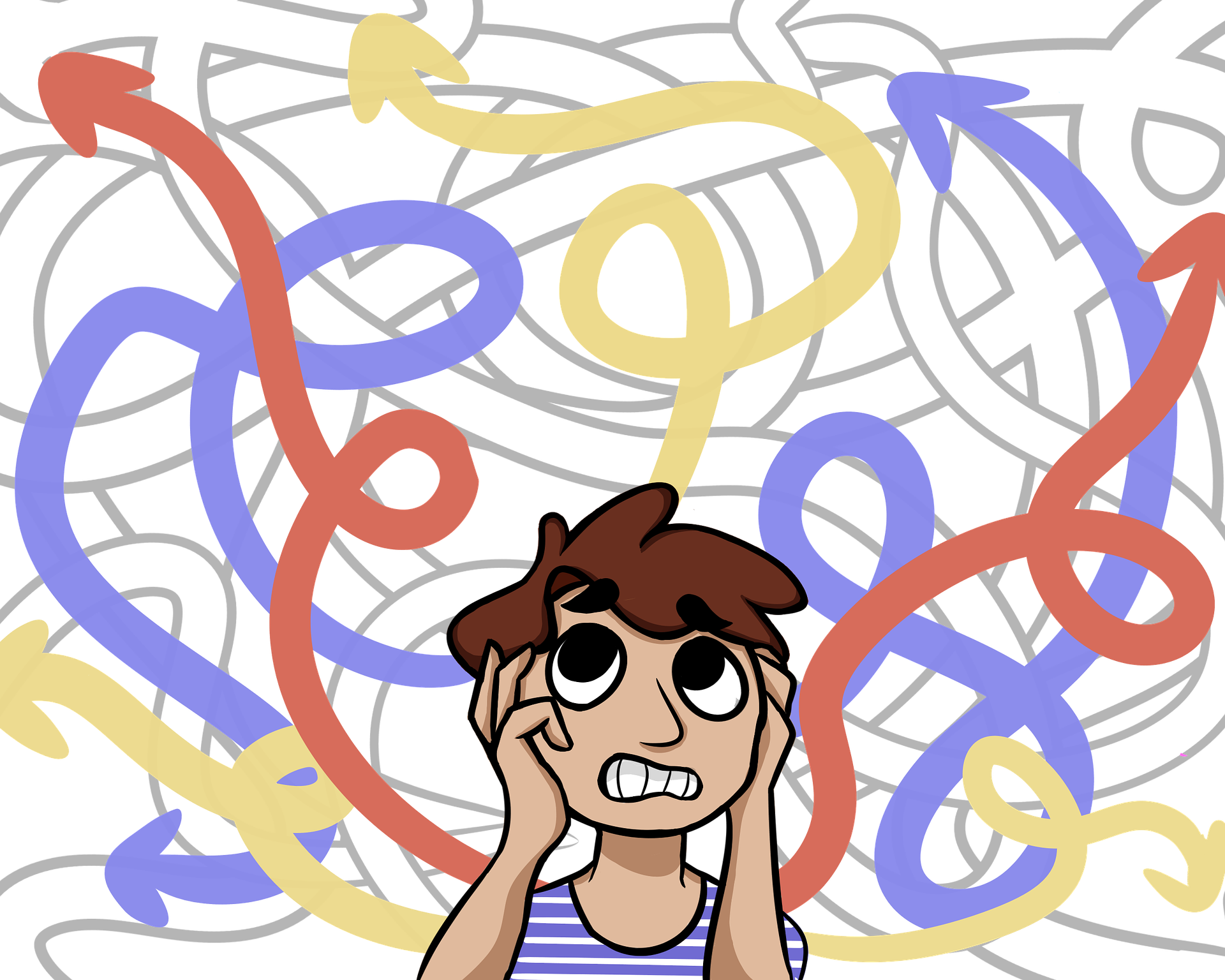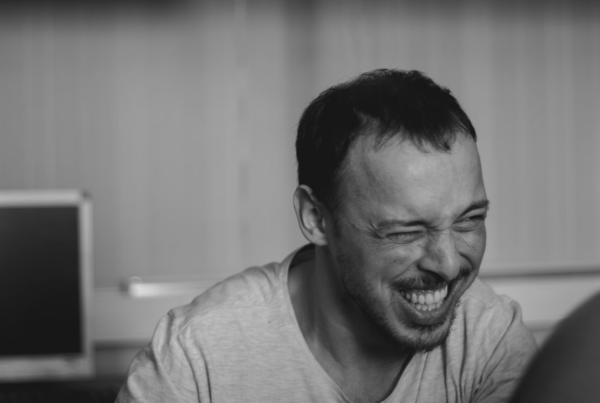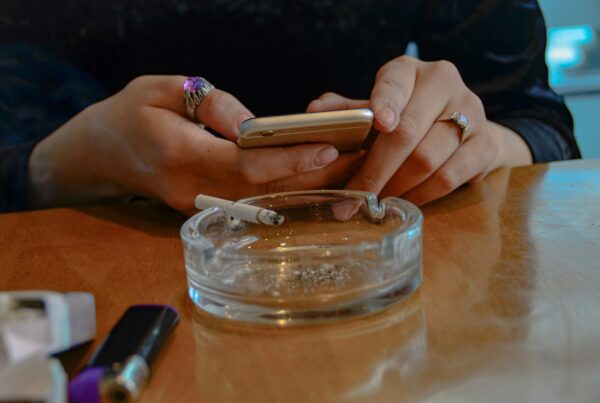
As human beings, we spend a great deal of time observing what others do. We do that to learn how certain things must be done or how we are supposed to behave. But more often than not, we do it to get an impression about the author of action: is he or she a good or bad person? Over the years, we get better and better at making these moral judgments, but how do children become experts at judging others? What kind of information do they use in their moral judgments?
As human beings, we spend a great deal of time observing what others do. We do that to learn how certain things must be done or how we are supposed to behave. But more often than not, we do it to get an impression about the author of action: is he or she a good or bad person? Over the years, we get better and better at making these moral judgments, but how do children become experts at judging others? What kind of information do they use in their moral judgments?

Illustratie: Maddy Mazur
In choosing who we want to make friends with, who to help or to learn from, we definitely have to look at the consequences of people’s actions. We care whether the consequences are good or bad for the person and for the rest of the people around them. However, this is not all that matters – we also want to know about the person’s intentions, and intentions can radically change the way we assess the consequences of people’s actions. We can, for instance, help someone just so that they could feel obliged to reciprocate at a later time or we can help someone just because we like them and expect nothing in return. If intentions were obvious and accessible to everyone, we would make a different impression in the first case, compared to the second. In sum, to understand an action from a moral point of view, we need to be able to understand both the valence of the intention and the valence of the outcome.
For a long time, it was believed that integrating intentions into moral judgements is something that children are not so good at, and such sophistication in reasoning was exclusively attributed to adults. Recently, studies revealed that children are better at making moral judgements that include intentions than previously thought – they are able to do so at three years of age (Nobes, Panagiotaki, & Pawson, 2009; Cushman et al., 2013; Margoni & Surian, 2020). Such studies focus on two important questions: when and how do children integrate intentions in their moral judgements.
In the past twenty years, researchers began to ask how much social information babies already understand. Social information tells us who we are in relation to others and how to interact with others in a meaningful way. It is knowledge which is crucial in determining who to approach and who to avoid, which groups to join, which rules to follow or how to regulate emotions in social contexts – basically any input that tells us how to adjust our behavior in a social context. It is becoming clearer that babies are great observers of social interactions and, on top of that, they prefer prosocial behaviours, showing from the first months of life that they can distinguish a good intention from a bad one (Hamlin, Wynn & Bloom, 2010; Hamlin, Wynn, Bloom & Mahajan, 2011).
“This indicates that sensitivity to negative intentions develops first.”
The most basic aspect of processing intentions is to recognize and distinguish them. Hamlin (2013) discovered, using puppet shows, that 8-month old infants prioritize intention in failed attempts to help and harm scenarios. She assessed how infants make social evaluations by presenting them with a live puppet show in which one character was either helpful or not helpful towards another character and then asked the infants to choose one of the toys by reaching out to their favourite. It was found that 8-month old infants prefer the helpers, even when they do not succeed in helping.
For preverbal children (who did not acquire language yet), intention can only be measured by means of preference, either by asking them to choose between two characters who displayed different intentions or measuring the duration they looked at a certain (presumably preferred) character. When they get older, another way of studying whether children take intention into account is to see if they choose themselves to help a person with good or bad intentions. A study by Vaish, Carpenter, and Tomasello (2010) showed that three-year-old children refused to help a person whom they saw behaving badly towards others previously. They did not help ill-intended actors regardless of whether their actions had a negative outcome or no outcome at all. It was also observed that at the same age, children are equally likely to help someone with positive intentions as someone with a neutral intention, showing that they do not prioritize good intentions yet. This indicates that sensitivity to negative intentions develops first.
The fact that noticing negative intentions seems to happen earlier than noticing positive intentions is also shown in a phenomenon called “the side-effect effect”. This phenomenon appears when an unforeseen negative side-effect of an action is seen as intended, but an unforeseen positive side-effect of an action is seen as unintended (Beebe & Buckwalter, 2010). Leslie, Knobe, & Cohen (2006) showed that this effect, which is observed with adults, also begins to emerge around four years old. They found that on average, children consider that a person who was aware that their actions might have a negative side-effect (despite intending to obtain a different outcome) must have produced the negative outcome on purpose. In a similar situation, this effect was not observed when the side-effects were presented as positive, which shows a bias towards negative outcomes.
“understanding that a person who accidentally caused a negative outcome can be punished without being labelled as a bad person”
Another crucial role of intention is distinguishing between an accident and a purposeful action. This type of information allows us to distinguish whether and how we assign rewards and punishments in our interactions. Yuli and Perner (1988) found that at three years old children distinguish between a bad intention and an unforeseen accident, but only after six years of age, they can make a more subtle distinction, between foreseen accidents and unforeseen accidents.
When the ability to distinguish intention and outcome is present, another question naturally arises: what does this information say about the social evaluation of the actor (is he or she good or bad?) and how do children allocate sanctions and rewards on the basis of this information? Margoni and Surian (2017) had children of four and eight years old evaluate situations of intended and unintended help by asking how good or bad was the author of the action and whether they should be punished or rewarded. They concluded that as children grow older, they become better at understanding that a person who accidentally caused a negative outcome can be punished without being labelled as a bad person, which shows a transition from the focus on outcomes to the focus on intentions.
Altogether, this article discussed only a few studies from the vast body of research that investigate how children make moral judgements at different stages of their development. They reveal that very early on, we recognize intentions and develop preferences about individuals based on those perceived intentions. As we grow older, we use intentions to evaluate others in increasingly complex social situations. The fact that children go through a gradual process of incorporating an increasing amount of information about intentions in their moral judgements demonstrates the importance of the distinction between consequences and goals for functioning in groups and interacting with others. <<
References
-Beebe, J. R., & Buckwalter, W. (2010). The Epistemic Side-Effect Effect. Mind & Language, 25(4), 474–498. https://doi.org/10.1111/j.1468-0017.2010.01398.x
-Cushman, F., Sheketoff, R., Wharton, S., & Carey, S. (2013). The development of intent based moral judgment. Cognition, 127(1), 6–21. https://doi.org/10.1016/j.cognition.2012.11.008
-Hamlin, J. K., Wynn, K., Bloom, P., & Mahajan, N. (2011). How infants and toddlers react to antisocial others. Proceedings of the National Academy of Sciences, 108(50), 19931–19936. https://doi.org/10.1073/pnas.1110306108
-Hamlin, J. Kiley. (2013). Failed attempts to help and harm: Intention versus outcome in preverbal infants’ social evaluations. Cognition, 128(3), 451–474. https://doi.org/10.1016/j.cognition.2013.04.004
-Kiley Hamlin, J., Wynn, K., & Bloom, P. (2010). Three-month-olds show a negativity bias in their social evaluations: Social evaluation by 3-month-old infants. Developmental Science, 13(6), 923–929. https://doi.org/10.1111/j.1467-7687.2010.00951.x
-Leslie, A. M., Knobe, J., & Cohen, A. (2006). Acting Intentionally and the Side-Effect Effect: Theory of Mind and Moral Judgment. Psychological Science, 17(5), 421–427. https://doi.org/10.1111/j.1467-9280.2006.01722.x
-Margoni, F., & Surian, L. (2017). Children’s intention-based moral judgments of helping agents. Cognitive Development, 41, 46–64. https://doi.org/10.1016/j.cogdev.2016.12.001
-Margoni, F., & Surian, L. (2020). Conceptual continuity in the development of intent-based moral judgment. Journal of Experimental Child Psychology, 194, 104812. https://doi.org/10.1016/j.jecp.2020.104812
-Nobes, G., Panagiotaki, G., & Pawson, C. (2009). The influence of negligence, intention, and outcome on children’s moral judgments. Journal of Experimental Child Psychology, 104(4), 382–397. https://doi.org/10.1016/j.jecp.2009.08.001
-Vaish, A., Carpenter, M., & Tomasello, M. (2010). Young Children Selectively Avoid Helping People With Harmful Intentions: Selectivity in Helping. Child Development, 81(6), 1661–1669. https://doi.org/10.1111/j.1467-8624.2010.01500.x
-Yuill, N., & Perner, J. (1988). Intentionality and knowledge in children’s judgments of actor’s responsibility and recipient’s emotional reaction. Developmental Psychology, 24(3), 358–365. https://doi.org/10.1037/0012-1649.24.3.358
In choosing who we want to make friends with, who to help or to learn from, we definitely have to look at the consequences of people’s actions. We care whether the consequences are good or bad for the person and for the rest of the people around them. However, this is not all that matters – we also want to know about the person’s intentions, and intentions can radically change the way we assess the consequences of people’s actions. We can, for instance, help someone just so that they could feel obliged to reciprocate at a later time or we can help someone just because we like them and expect nothing in return. If intentions were obvious and accessible to everyone, we would make a different impression in the first case, compared to the second. In sum, to understand an action from a moral point of view, we need to be able to understand both the valence of the intention and the valence of the outcome.
For a long time, it was believed that integrating intentions into moral judgements is something that children are not so good at, and such sophistication in reasoning was exclusively attributed to adults. Recently, studies revealed that children are better at making moral judgements that include intentions than previously thought – they are able to do so at three years of age (Nobes, Panagiotaki, & Pawson, 2009; Cushman et al., 2013; Margoni & Surian, 2020). Such studies focus on two important questions: when and how do children integrate intentions in their moral judgements.
In the past twenty years, researchers began to ask how much social information babies already understand. Social information tells us who we are in relation to others and how to interact with others in a meaningful way. It is knowledge which is crucial in determining who to approach and who to avoid, which groups to join, which rules to follow or how to regulate emotions in social contexts – basically any input that tells us how to adjust our behavior in a social context. It is becoming clearer that babies are great observers of social interactions and, on top of that, they prefer prosocial behaviours, showing from the first months of life that they can distinguish a good intention from a bad one (Hamlin, Wynn & Bloom, 2010; Hamlin, Wynn, Bloom & Mahajan, 2011).
“This indicates that sensitivity to negative intentions develops first.”
The most basic aspect of processing intentions is to recognize and distinguish them. Hamlin (2013) discovered, using puppet shows, that 8-month old infants prioritize intention in failed attempts to help and harm scenarios. She assessed how infants make social evaluations by presenting them with a live puppet show in which one character was either helpful or not helpful towards another character and then asked the infants to choose one of the toys by reaching out to their favourite. It was found that 8-month old infants prefer the helpers, even when they do not succeed in helping.
For preverbal children (who did not acquire language yet), intention can only be measured by means of preference, either by asking them to choose between two characters who displayed different intentions or measuring the duration they looked at a certain (presumably preferred) character. When they get older, another way of studying whether children take intention into account is to see if they choose themselves to help a person with good or bad intentions. A study by Vaish, Carpenter, and Tomasello (2010) showed that three-year-old children refused to help a person whom they saw behaving badly towards others previously. They did not help ill-intended actors regardless of whether their actions had a negative outcome or no outcome at all. It was also observed that at the same age, children are equally likely to help someone with positive intentions as someone with a neutral intention, showing that they do not prioritize good intentions yet. This indicates that sensitivity to negative intentions develops first.
The fact that noticing negative intentions seems to happen earlier than noticing positive intentions is also shown in a phenomenon called “the side-effect effect”. This phenomenon appears when an unforeseen negative side-effect of an action is seen as intended, but an unforeseen positive side-effect of an action is seen as unintended (Beebe & Buckwalter, 2010). Leslie, Knobe, & Cohen (2006) showed that this effect, which is observed with adults, also begins to emerge around four years old. They found that on average, children consider that a person who was aware that their actions might have a negative side-effect (despite intending to obtain a different outcome) must have produced the negative outcome on purpose. In a similar situation, this effect was not observed when the side-effects were presented as positive, which shows a bias towards negative outcomes.
“understanding that a person who accidentally caused a negative outcome can be punished without being labelled as a bad person”
Another crucial role of intention is distinguishing between an accident and a purposeful action. This type of information allows us to distinguish whether and how we assign rewards and punishments in our interactions. Yuli and Perner (1988) found that at three years old children distinguish between a bad intention and an unforeseen accident, but only after six years of age, they can make a more subtle distinction, between foreseen accidents and unforeseen accidents.
When the ability to distinguish intention and outcome is present, another question naturally arises: what does this information say about the social evaluation of the actor (is he or she good or bad?) and how do children allocate sanctions and rewards on the basis of this information? Margoni and Surian (2017) had children of four and eight years old evaluate situations of intended and unintended help by asking how good or bad was the author of the action and whether they should be punished or rewarded. They concluded that as children grow older, they become better at understanding that a person who accidentally caused a negative outcome can be punished without being labelled as a bad person, which shows a transition from the focus on outcomes to the focus on intentions.
Altogether, this article discussed only a few studies from the vast body of research that investigate how children make moral judgements at different stages of their development. They reveal that very early on, we recognize intentions and develop preferences about individuals based on those perceived intentions. As we grow older, we use intentions to evaluate others in increasingly complex social situations. The fact that children go through a gradual process of incorporating an increasing amount of information about intentions in their moral judgements demonstrates the importance of the distinction between consequences and goals for functioning in groups and interacting with others. <<



